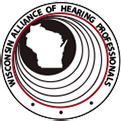The main topic of this article is “What is Acoustic Shock Syndrome?”, and we’ll give an answer to your question. Telemarketers and employees working in call centers are most susceptible to experiencing symptoms that bring about acoustic shock.
Acoustic Shock Syndrome is a result of an individual’s exposure sudden rise in loud sounds via telephones, headsets, et al. Triggers of which include High Pitched Tones (HPT) and sounds from fax machines, feedback oscillation, signaling tones, IP network shrieks, mobile phone interference, et al.
In a study by the Department of Human Anatomy, University of Nairobi, Nairobi Kenya, Nyandusi Musa, Loyal Poonamjeet, Ayugi John, and Peter Mugwe investigated the correlation of people with Acoustic Shock Syndrome with the number of years worked.
“For individuals working with headphones all day long, 1.56% of individuals who had been in employment for less than one year had the syndrome.”
The percentage increased exponentially with people having worked for between 3 to 5 years having the highest number of people who had Acoustic Shock Syndrome.
Findings from the study of 385 people with diagnosed Acoustic Shock Syndrome showed that 13% of the employees at call centers or telemarketers eventually developed irrespective of the number of years of service.
Symptoms
Males and Females have similar chances of risk and it is only necessary that employees in jobs that require wearing of headsets on a daily basis to be wary of the occupational hazards.
“The symptoms manifest themselves because of the huge contraction of the muscles in the inner ear. The resulting effect of the contraction is a tear in the ear’s inner membrane.”
The symptoms to look out for and diagnose Acoustic Shock Syndrome include:
- Pain in the ear, neck, and the jaw
- Headache
- Tinnitus, which is the hearing of sound in your ear without a source of external sounds
- Nausea
- Hypersensitivity to noise ranging from moderate to loud
- Reduced balance
- Increased levels of anxiety leading to depression
- Fatigue leading to disorientation
- Fluttering noises in the ear that manifest as a hollow feeling
- Shock
Tinnitus may go on for an indefinite period, and if the above symptoms go unchecked by a qualified physician, it can lead to permanent tinnitus and hearing loss.
The symptoms are involuntary and subjective in nature meaning they are not easily controlled nor measured. In many cases, the symptoms are easy to misconstrue, and it can lead to severe hearing loss and in other cases, permanent damage.
Prevention
Prevention is better than cure and specialists after many attempts have devised methods to ward off Acoustic Shock Syndrome.
The most popular way is the installation of smart devices in the workplace by employers to reduce and remove any potentially harmful HPTs through digital processing.
Here are ways to prevent the onset of Acoustic Shock Syndrome:
- High-Quality Headsets – The market is full of headsets that have inbuilt amplifiers that provide degree protection from harmful sounds by lowering the sound when HPTS occurs.
- Education – Most employees will hardly note the danger of HPTs and will brush them off as not harmful. By making information on Acoustic Shock Syndrome, the earlier the noticing of symptoms, the easier it will be to diagnose and treat the Acoustic Shock Syndrome.
- Technology – In sectors that require that an employee wears headsets for long periods, there is a technology that measures the employee’s noise exposure prior to and after the attaching of devices. These technologies can store data for up to six weeks. The data collected can be useful in the undertaking of workplace audits.
Suits
It is common to find employees suing their employers for neglect and a myriad of other reasons. Acoustic Shock Syndrome cases have been on the rise.
The Johnsonlawoffices.net specializes in workplace lawsuits and here is a guide on what to do when presented with an Acoustic Shock Syndrome claim.
- Have an updated account of the protector equipment already installed.
- Have a detailed log of all the incidents in the past.
- Have a record of the hearing health status of the employees and regularly monitor for deterioration or improvement in the hearing health of the employee.
- Keep the evidence on the maintenance schedules of headsets and devices.
- Have records of the headsets and as well as the training sessions involving the employees and the materials used in the sessions.
The call center industry is fast expanding, and Acoustic Shock Syndrome has become the leading industrial injury problem of the 21st century. The number of individuals keeps growing as the sector grows.
From the study done by the University of Nairobi, the researchers concluded that methods of noise measurement and monitoring in Call centers and other similar work environments require the implementation to allow for the establishment of a time-weighted average for employee protection.



